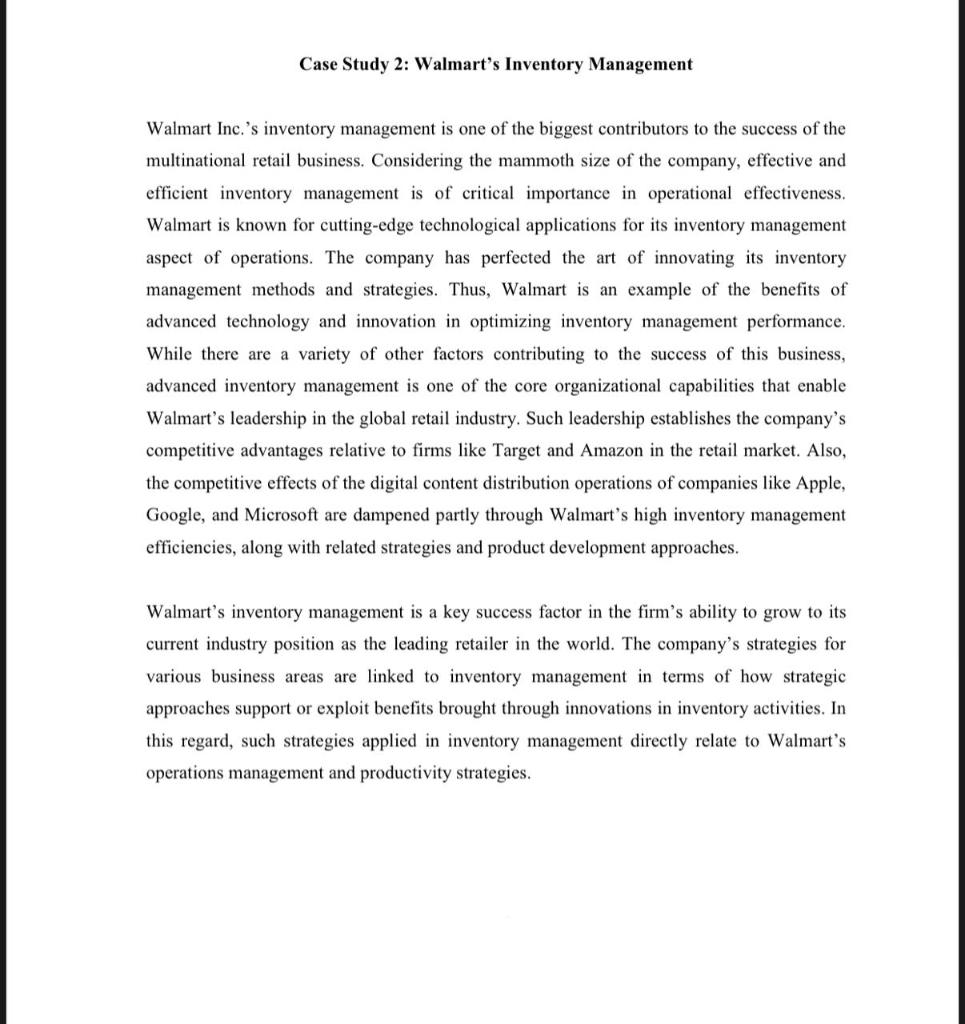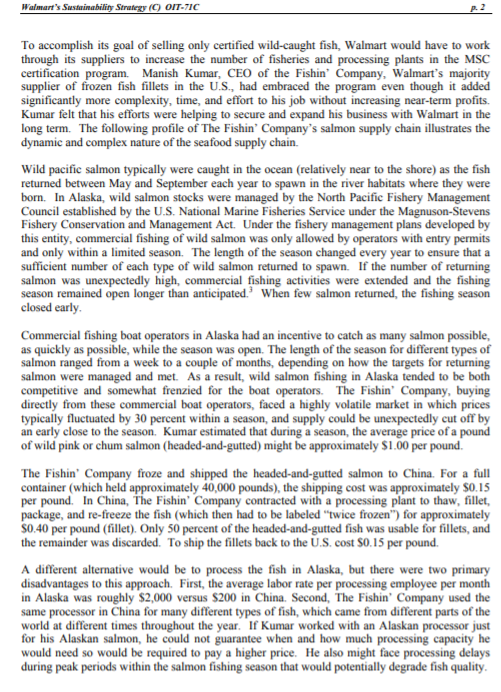Walmart is a multinational retail corporation that operates a chain of discount department stores and warehouse stores. Founded in 1962 by Sam Walton, the company has grown to become one of the largest retailers in the world, with over 11,500 stores in 27 countries. One key factor in Walmart's success has been its ability to effectively manage its inventory, ensuring that it has the right products in the right quantities at the right time. In this case study, we will examine how Walmart has implemented various inventory management strategies to optimize its operations and maintain its competitive advantage.
One key strategy that Walmart has used to manage its inventory is just-in-time (JIT) purchasing. This approach involves ordering and receiving inventory only as it is needed, rather than maintaining a large, expensive inventory of goods. This helps to reduce waste and excess inventory, as well as minimize storage costs. Walmart has also implemented advanced logistics systems to ensure that its stores are well-stocked at all times. This includes using sophisticated software to track inventory levels and predict customer demand, as well as using a network of distribution centers and trucks to efficiently move goods from suppliers to stores.
Another important aspect of Walmart's inventory management strategy is its use of data analytics. The company collects and analyzes vast amounts of data on customer purchases, store traffic, and other factors to gain insights into consumer behavior and demand patterns. This helps Walmart to more accurately forecast demand and optimize its inventory levels. For example, the company may adjust its inventory levels in advance of a holiday or major event, or reorder certain products based on their popularity in a particular store or region.
In addition to these strategies, Walmart has also implemented various technologies to improve its inventory management. For example, the company has implemented RFID (radio-frequency identification) tags on many of its products, which allows it to more accurately track inventory levels and location. This has helped Walmart to reduce out-of-stock situations and improve its ability to meet customer demand.
Overall, Walmart's inventory management strategies have played a critical role in its success as a retailer. By utilizing JIT purchasing, advanced logistics systems, data analytics, and technology, the company has been able to optimize its operations and maintain its competitive advantage. As a result, Walmart has become a leader in the retail industry, with a strong reputation for efficiency and customer satisfaction.
Inventory Management at Wal

Walmart uses the buffer inventory type in its stores by keeping a small margin of extra goods in order to maintain business continuity when demand suddenly fluctuates. Wal-Mart always emphasized the need to reduce its purchasing costs and offer the best price to its customers. In 1998, Walmart entered Germany with the acquisition of Wertkauf and Interspar chain Louisa 2006. Wal-Mart with its power distribution system made quite innovative changes like reducing paper work, reduced its lead time drastically, used bar codes to bill which recorded inventory levels and the access to the stock levels served as the valuable data for management. Stores could choose from a number of delivery plans. Therefore, the company became successful because of the active collaboration. Click Here to Apply FAQ's What is the business model of Walmart? IX Evaluate Each Course Of Action Finished goods inventory, Buffer inventory, Anticipation inventory and Transit inventory are the four key alternatives that have been performed under the inventory management practices of Wal-Mart.
Case Study: Inventory Management Practices at Walmart

It also showed whether a product was being loaded in the distribution center or was in transit on a truck. Fewer goods are stored at the warehouses. The Walmart is able to keep track of its inventory with the help of a little gadget called, Telson. The manufacturers and suppliers managed to synchronize the demand projections through their collaborative planning, forecast, and replenishment policy as every Retail Link is connected using technology and captures the information from the central database, satellite network, and store-level point-of-sale systems Wal-Mart, 2013. Wal-Mart managers push the employees to the limit; they just want to see how much they can get away with without having to hire someone else. Wal-Mart also incorporates just in time system to minimize storage levels. Lower prices also eliminate the expense of frequent sales promotions and sales are more predictable.
Case Study Of Walmart's Inventory Management Operations

Snider Introduction Walmart The organization I chose to write about in this paper is Walmart, I will be discussing about the organization structure, its inventory management and procedures, if they uses Vendor managed inventory VMI and does the company ensure it has the right inventory at the right time and control the costs. Walmart In 1945, Sam Walton opened his first variety store and in 1962, he opened his first Wal-Mart Discount City in Rogers, Arkansas. As such, the members of the chain would get accurate information and materials as needed. The distribution center could also be used for meetings and paperwork. Many shelves remained empty in the stores.








